阅读目录(Content)
前言
前面以前把关于HDFS集群的所有知识给讲解完了,接下来给大家分享的是MapReduce这个Hadoop的并行计算框架。
一、背景
1)爆炸性增长的Web规模数据量
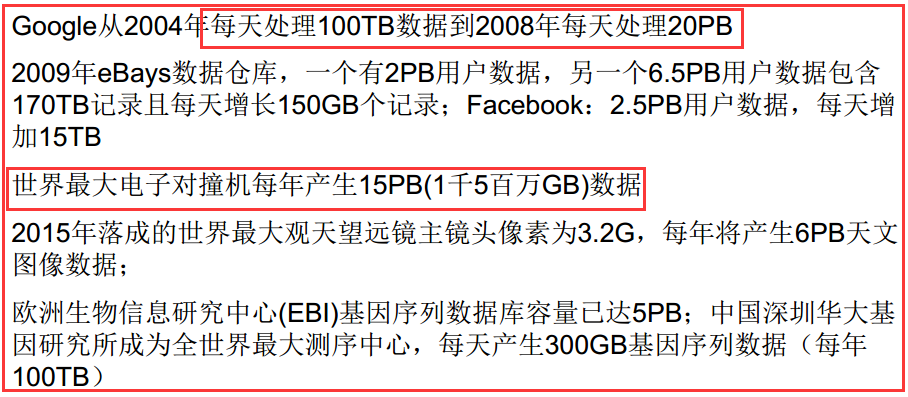
2)超大的计算量/计算复杂度
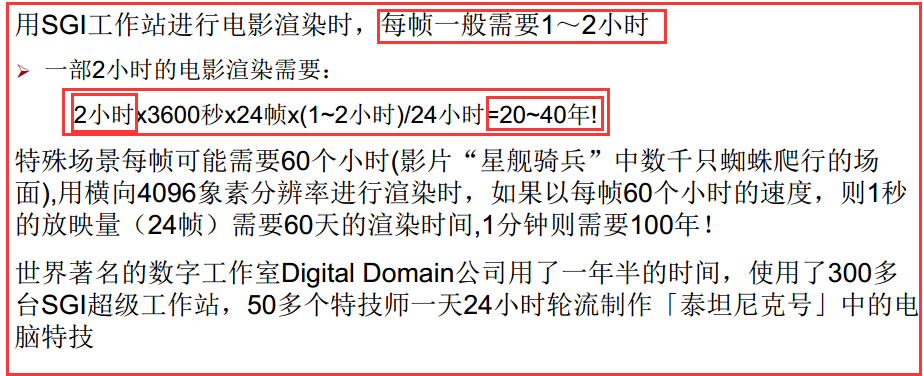
3)并行计算大趋所势
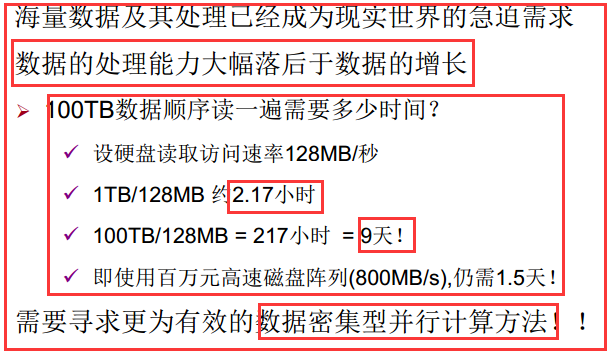
二、大数据的并行计算
1)一个大数据若可以分为具有同样计算过程的数据块,并且这些数据块之间不存在数据依赖关系,则提高处理速度最好的办法就是并行计算。
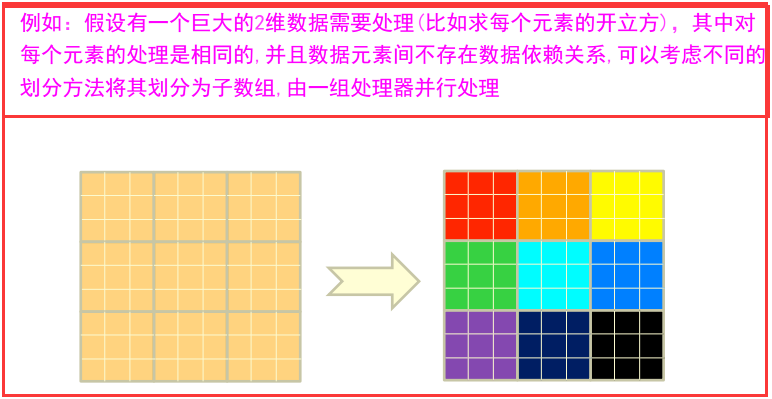
2)大数据并行计算
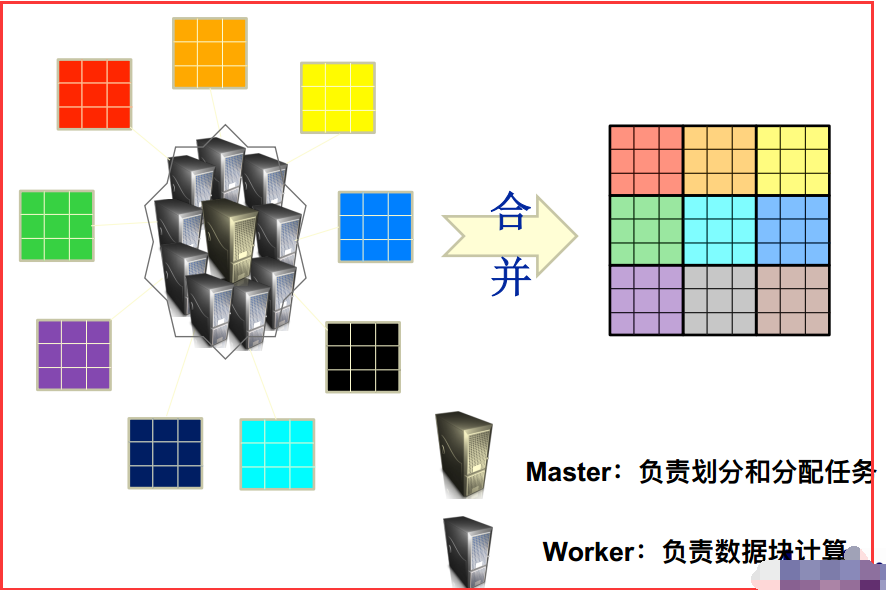
三、Hadoop的MapReduce概述
3.1、需要MapReduce原因
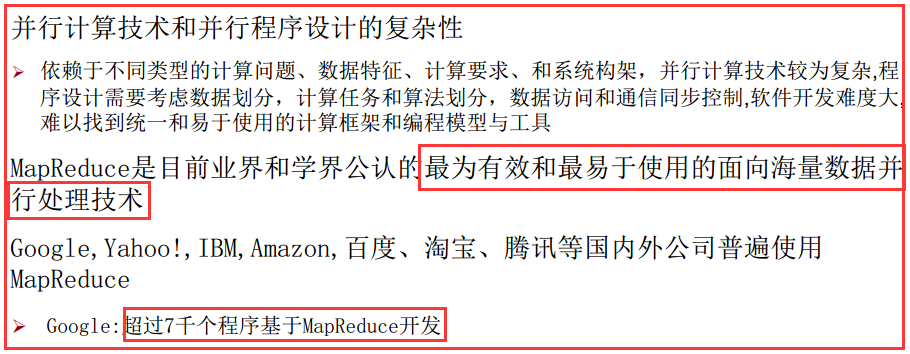
3.2、MapReduce简介
1)产生MapReduce背景
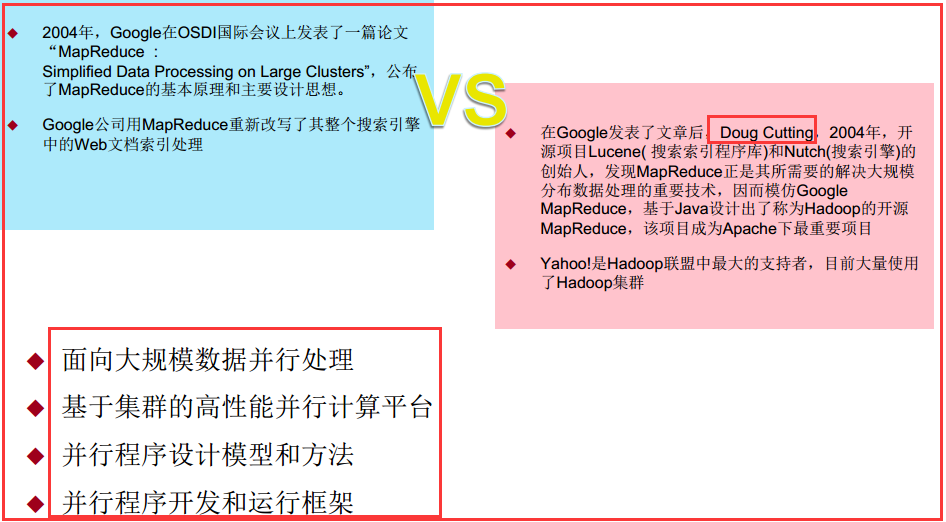
2)整体认识
MapReduce是一种编程模型,用于大规模数据集(大于1TB)的并行运算,用于解决海量数据的计算问题。
MapReduce分成了两个部分:
1)映射(Mapping)对集合里的每个目标应用同一个操作。即,如果你想把表单里每个单元格乘以二,那么把这个函数单独地应用在每个单元格上的操作就属于mapping。
2)化简(Reducing)遍历集合中的元素来返回一个综合的结果。即,输出表单里一列数字的和这个任务属于reducing。
你向MapReduce框架提交一个计算作业时,它会首先把计算作业拆分成若干个Map任务,然后分配到不同的节点上去执行,
每一个Map任务处理输入数据中的一部分,当Map任务完成后,它会生成一些中间文件,这些中间文件将会作为Reduce任务的输入数据。
Reduce任务的主要目标就是把前面若干个Map的输出汇总到一起并输出。
MapReduce的伟大之处就在于编程人员在不会分布式并行编程的情况下,将自己的程序运行在分布式系统上。
3.3、MapReduce编程模型
1)MapReduce借鉴了函数式程序设计语言Lisp中的思想,定义了如下的Map和Reduce两个抽象的编程接口。由用户去编程实现:
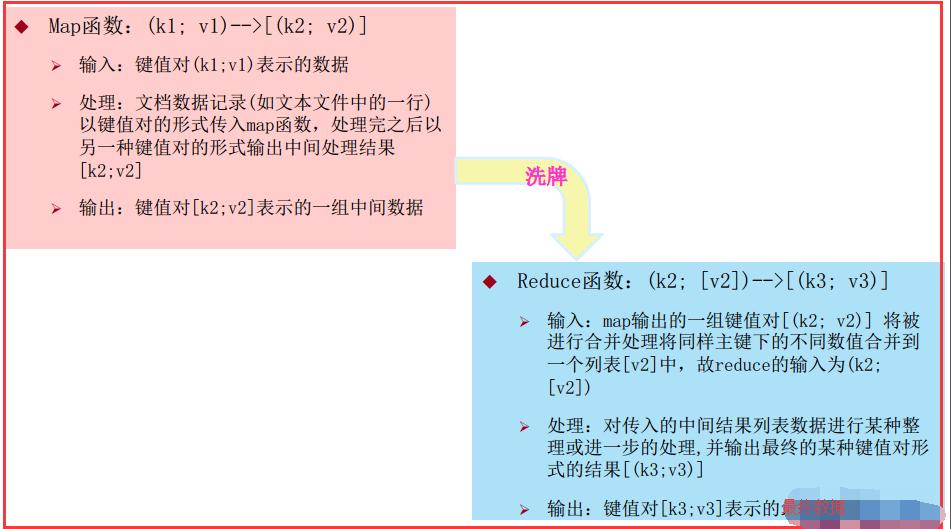
注意:Map是一行一行去处理数据的。
2)详细的处理过程
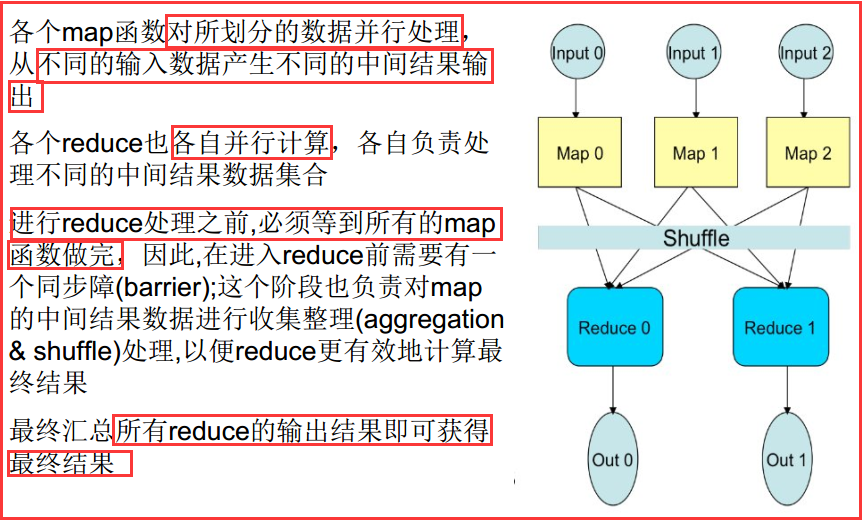
四、编写MapReduce程序
4.1、数据样式与环境
1)环境
我使用的是Maven,前面 有我配置的pom.xml文件。
2)数据样式
这是一个专利引用文件,格式是这样的:
专利ID:被引用专利ID
1,2
1,3
2,3
3,4
2,4
4.2、需求分析
1)需求
计算出被引用专利的次数
2)分析
从上面的数据分析出,我们需要的是一行数据中的后一个数据。分析一下:
在map函数中,输入端v1代表的是一行数据,输出端的k2可以代表是被引用的专利,在一行数据中所以v2可以被赋予为1。
在reduce函数中,k2还是被引用的专利,而[v2]是一个数据集,这里是将k2相同的键的v2数据合并起来。最后输出的是自己需要的数据k3代表的是被引用的专利,v3是引用的次数。
画图分析:
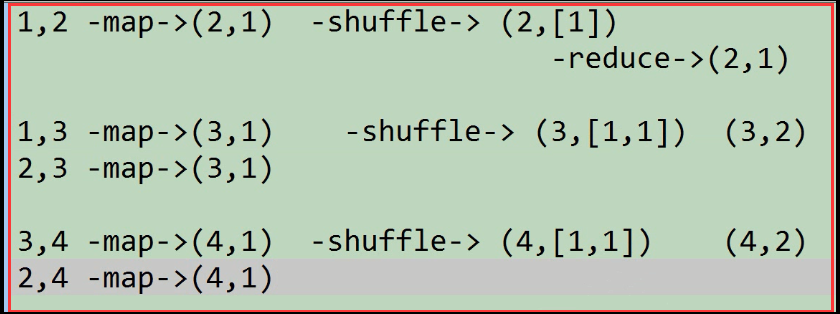
4.3、代码实现
1)编写一个解析类,用来解析数据文件中一行一行的数据。
import org.apache.hadoop.io.Text;
public class PatentRecordParser {
//1,2
//1,3
//2,3
//表示数据中的第一列
private String patentId;
//表示数据中的第二列
private String refPatentId;
//表示解析的当前行的数据是否有效
private boolean valid;
public void parse(String line){
String[] strs = line.split(",");
if (strs.length==2){
patentId = strs[0].trim();
refPatentId = strs[1].trim();
if (patentId.length()>0&&refPatentId.length()>0){
valid = true;
}
}
}
public void parse(Text line){
parse(line.toString());
}
public String getPatentId() {
return patentId;
}
public void setPatentId(String patentId) {
this.patentId = patentId;
}
public String getRefPatentId() {
return refPatentId;
}
public void setRefPatentId(String refPatentId) {
this.refPatentId = refPatentId;
}
public boolean isValid() {
return valid;
}
public void setValid(boolean valid) {
this.valid = valid;
}
}
2)编写PatentReference_0011去实现真正的计算
import org.apache.hadoop.conf.Configuration;
import org.apache.hadoop.conf.Configured;
import org.apache.hadoop.fs.Path;
import org.apache.hadoop.io.IntWritable;
import org.apache.hadoop.io.LongWritable;
import org.apache.hadoop.io.Text;
import org.apache.hadoop.mapreduce.Job;
import org.apache.hadoop.mapreduce.Mapper;
import org.apache.hadoop.mapreduce.Reducer;
import org.apache.hadoop.mapreduce.lib.input.TextInputFormat;
import org.apache.hadoop.mapreduce.lib.output.TextOutputFormat;
import org.apache.hadoop.util.Tool;
import org.apache.hadoop.util.ToolRunner;
import java.io.IOException;
public class PatentReference_0011 extends Configured implements Tool {
//-Dinput=/data/patent/cite75_99.txt
public static class PatentMapper
extends Mapper<LongWritable,Text,Text,IntWritable>{
private PatentRecordParser parser = new PatentRecordParser();
private Text key = new Text();
//把进入reduce的value都设置成1
private IntWritable value = new IntWritable(1);
//进入map端的数据,每次进入一行。
//MapReduce都是具有一定结构的数据,有一定含义的数据。
//进入时候map的k1(该行数据首个字符距离整个文档首个字符的距离),v1(这行数据的字符串)
@Override
protected void map(LongWritable key, Text value, Context context) throws IOException, InterruptedException {
parser.parse(value);
if (parser.isValid()){
this.key.set(parser.getRefPatentId());
context.write(this.key,this.value);
}
}
}
public static class PatentReducer
extends Reducer<Text,IntWritable,Text,IntWritable>{
@Override
protected void reduce(Text key, Iterable<IntWritable> values, Context context) throws IOException, InterruptedException {
int count = 0;
for (IntWritable iw:values){
count+=iw.get();
}
context.write(key,new IntWritable(count));
//注意:在map或reduce上面的打印语句是没有办法输出的,但会记录到日志文件当中。
}
}
@Override
public int run(String[] args) throws Exception {
//构建作业所处理的数据的输入输出路径
Configuration conf = getConf();
Path input = new Path(conf.get("input"));
Path output = new Path(conf.get("output"));
//构建作业配置
Job job = Job.getInstance(conf,this.getClass().getSimpleName()+"Lance");//如果不指定取的名字就是当前类的类全名
//设置该作业所要执行的类
job.setJarByClass(this.getClass());
//设置自定义的Mapper类以及Map端数据输出时的类型
job.setMapperClass(PatentMapper.class);
job.setMapOutputKeyClass(Text.class);
job.setMapOutputValueClass(IntWritable.class);
//设置自定义的Reducer类以及输出时的类型
job.setReducerClass(PatentReducer.class);
job.setMapOutputKeyClass(Text.class);
job.setMapOutputValueClass(IntWritable.class);
//设置读取最原始数据的格式信息以及
//数据输出到HDFS集群中的格式信息
job.setInputFormatClass(TextInputFormat.class);
job.setOutputFormatClass(TextOutputFormat.class);
//设置数据读入和写出的路径到相关的Format类中
TextInputFormat.addInputPath(job,input);
TextOutputFormat.setOutputPath(job,output);
//提交作业
return job.waitForCompletion(true)?0:1;
}
public static void main(String[] args) throws Exception {
System.exit(
ToolRunner.run(new PatentReference_0011(),args)
);;
}
}
3)使用Maven打包好,上传到安装配置好集群客户端的Linux服务器中
4)运行测试

执行上面的语句,注意指定输出路径的时候,一定是集群中的路径并且目录要预先不存在,因为程序会自动去创建这个目录。
5)然后我们可以去Web控制页面去观察htttp://ip:8088去查看作业的进度
